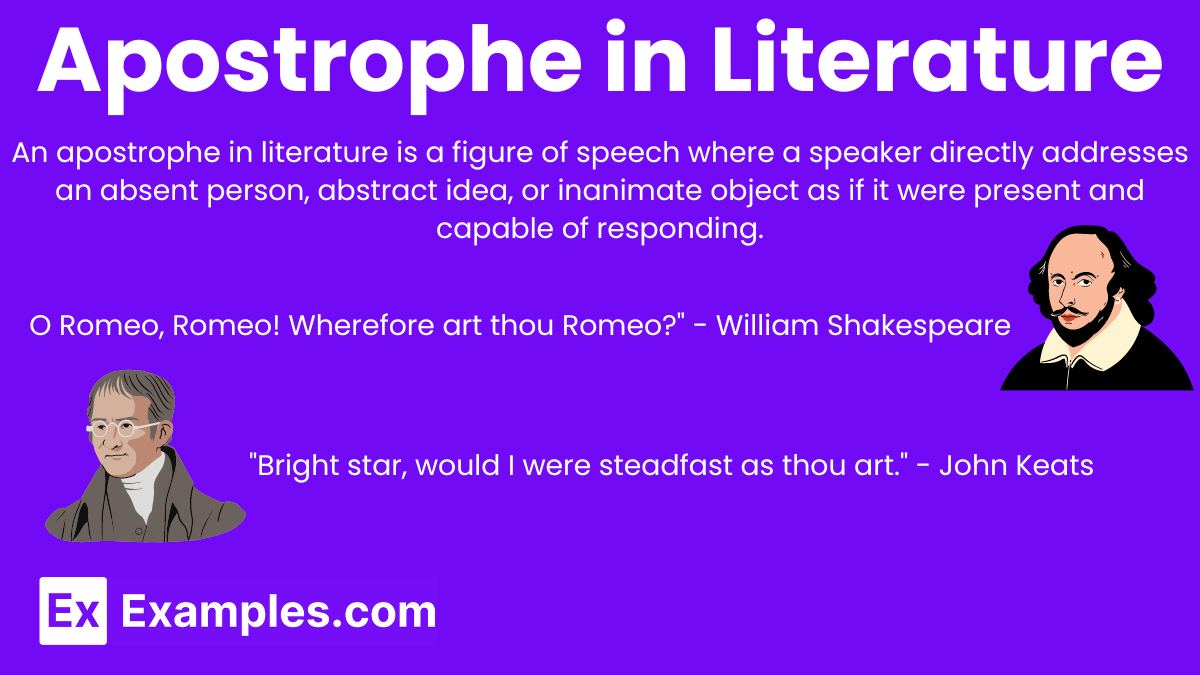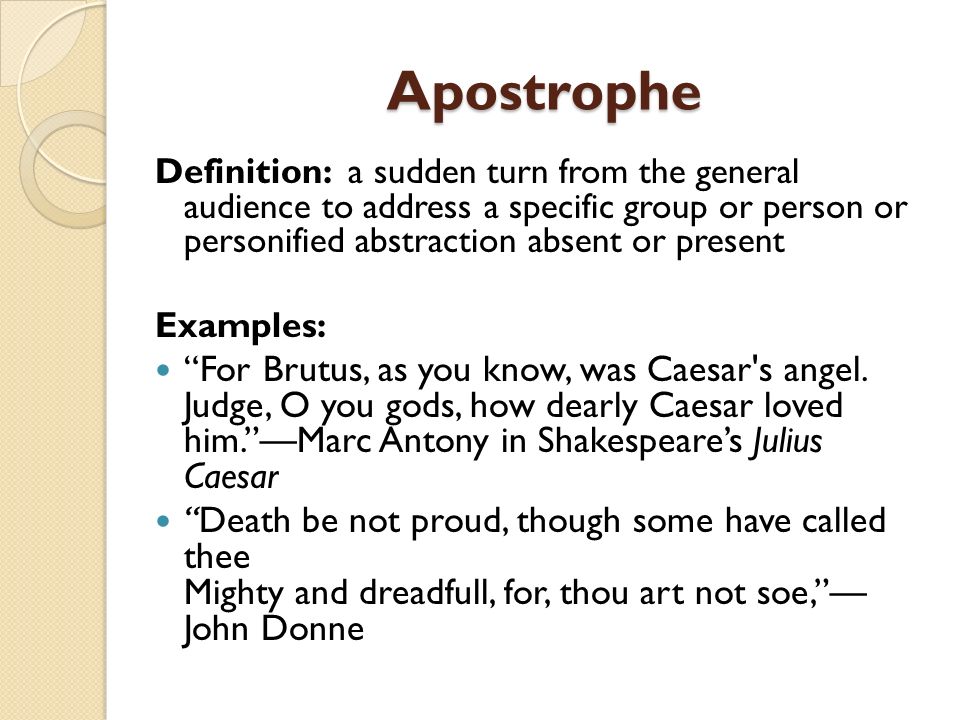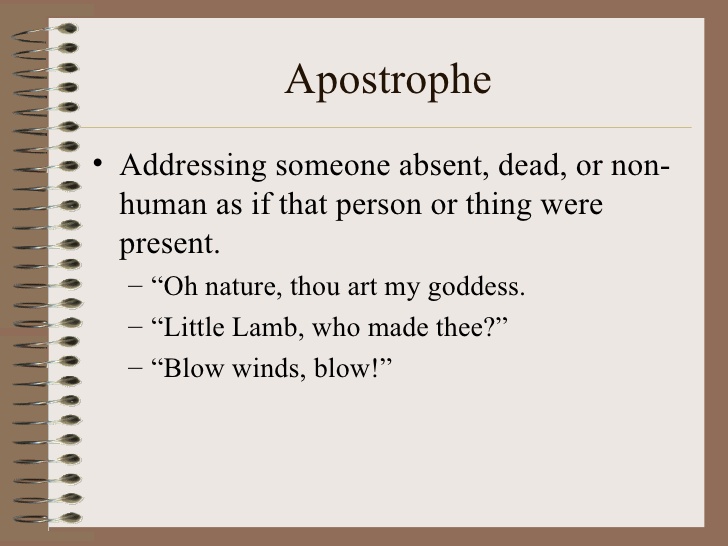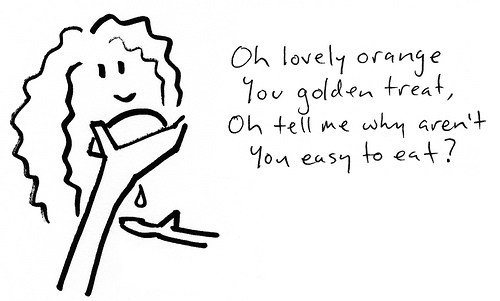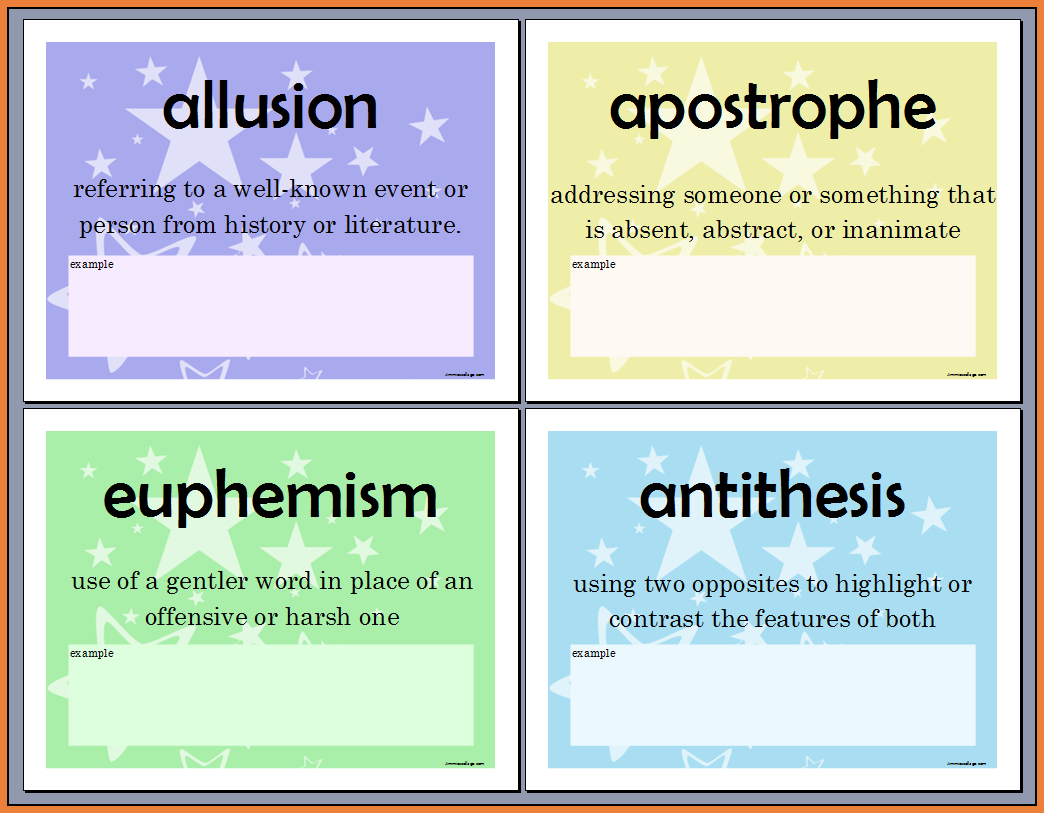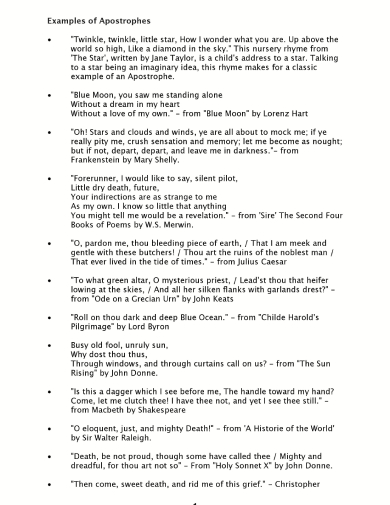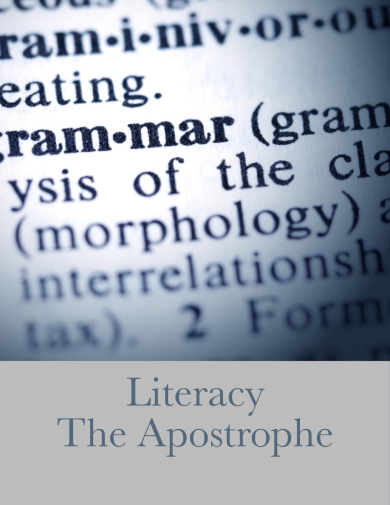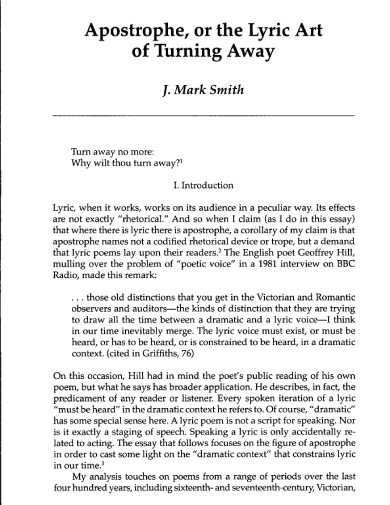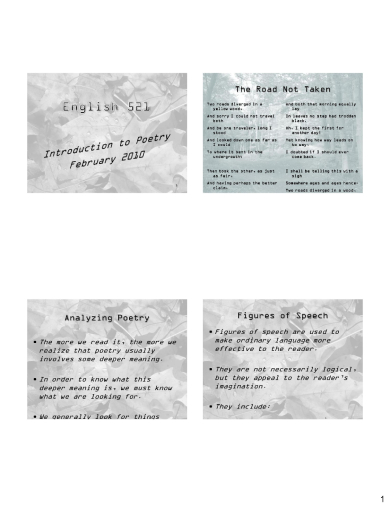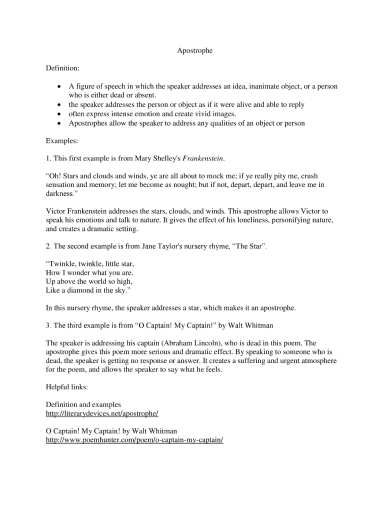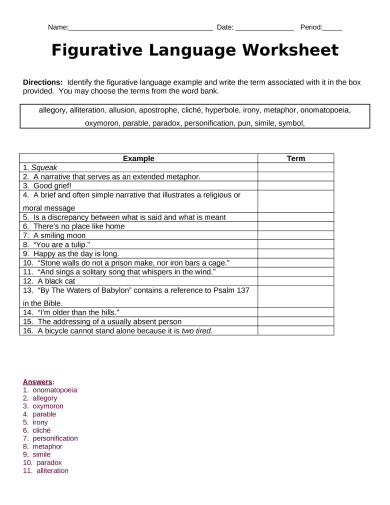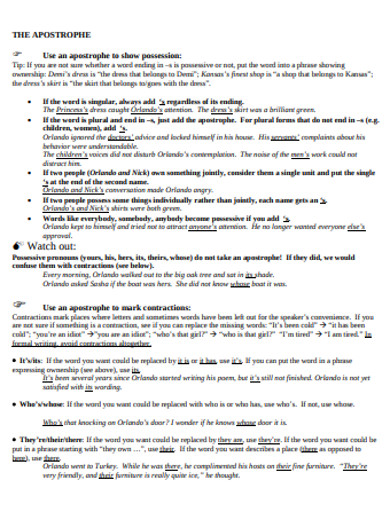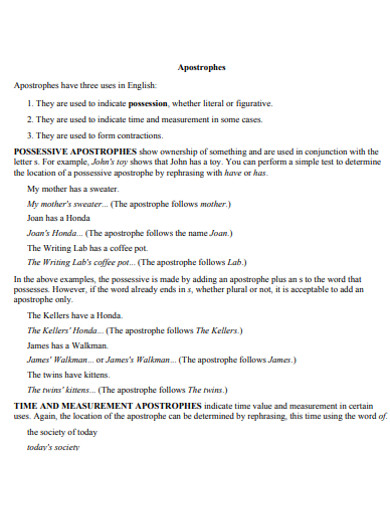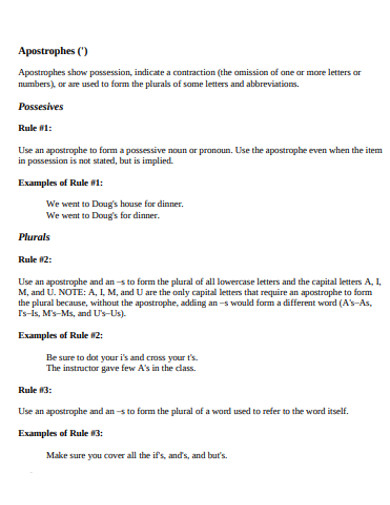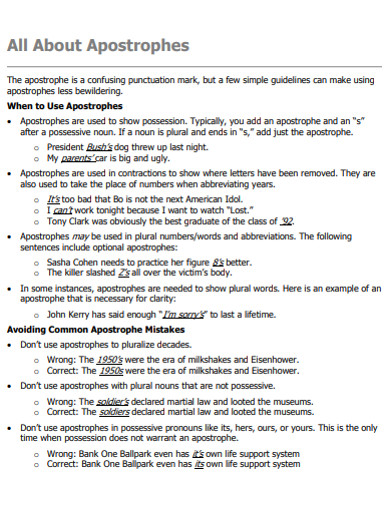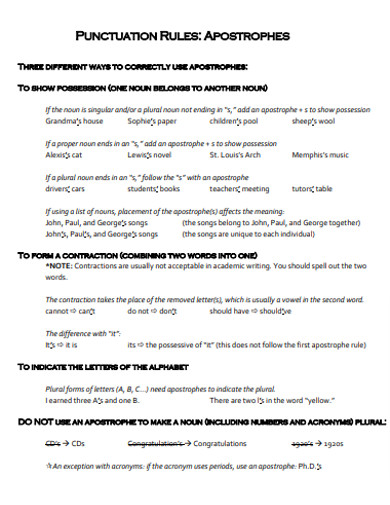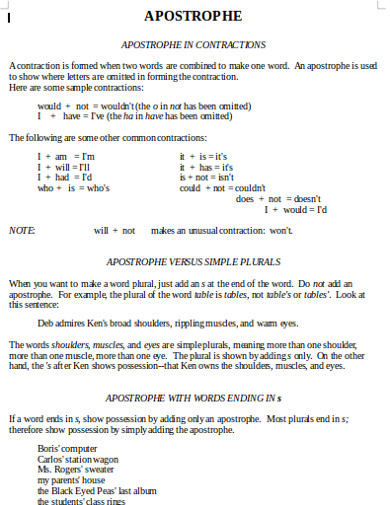30+ Apostrophe in Literature Examples
In literature, apostrophe is known to be a figure of speech. A writer or the literary speaker who uses apostrophe is directly speaking to someone who is either not physically present, to someone who is dead, or to an inanimate object. So the next time you talk to your phone like it’s your most treasured possession, guess what, you’re using a figure of speech.
Generally speaking, apostrophe and other figures of speech are what we call literary devices. To further explain, the literary devices are techniques that a writer uses to produce a special effect in their general writing. When you read a novel or a poem and the writer starts talking directly to abstract concepts like love, death, or hope as if they are standing right in front of them, if you do not know, you are seeing a speech example of an apostrophe. To know more, you may look at these apostrophe samples first.
What is Apostrophe in Literature?
Examples of Apostrophe in Literature
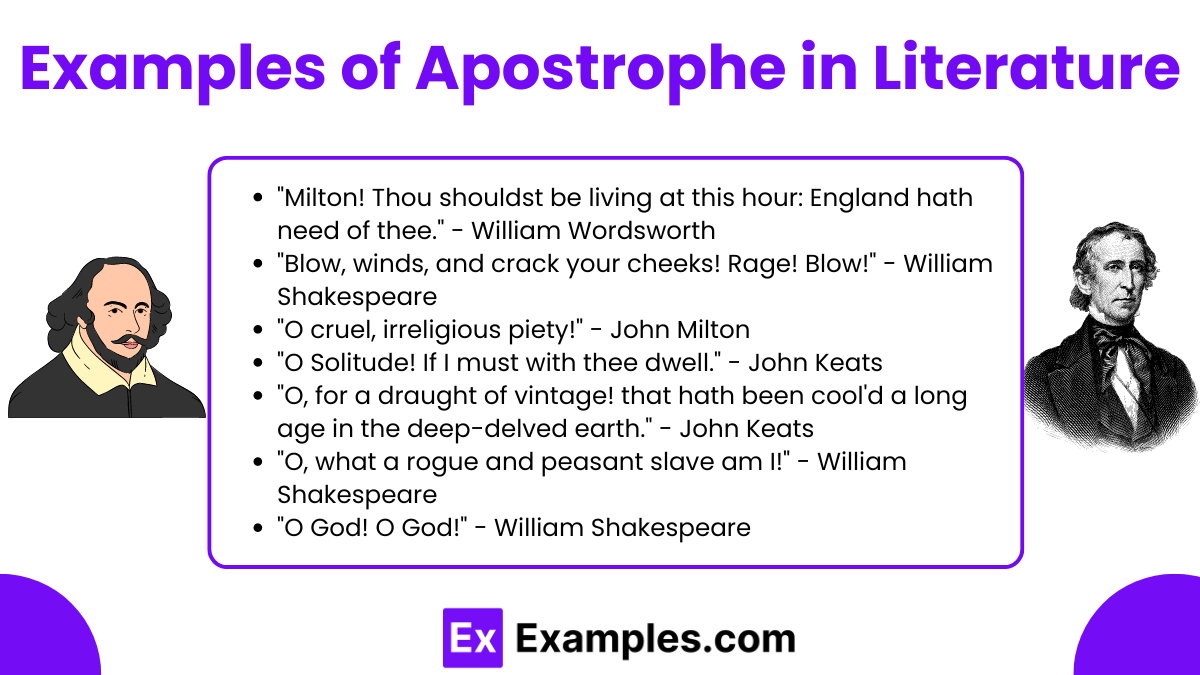
- O Romeo, Romeo! Wherefore art thou Romeo?” – William Shakespeare
- “Death, be not proud, though some have called thee mighty and dreadful.” – John Donne
- “O Captain! My Captain! Our fearful trip is done.” – Walt Whitman
- “Twinkle, twinkle, little star, how I wonder what you are.” – Jane Taylor
- “O, pardon me, thou bleeding piece of earth.” – William Shakespeare
- “Is this a dagger which I see before me, the handle toward my hand?” – William Shakespeare
- “O cunning Love! with tears thou keep’st me blind.” – William Shakespeare
- “Roll on, thou deep and dark blue Ocean—roll!” – Lord Byron
- “O happy dagger! This is thy sheath; there rust, and let me die.” – William Shakespeare
- “O wild West Wind, thou breath of Autumn’s being.” – Percy Bysshe Shelley
- “O, she doth teach the torches to burn bright!” – William Shakespeare
- “O, how bitter a thing it is to look into happiness through another man’s eyes!” – William Shakespeare
- “Milton! Thou shouldst be living at this hour: England hath need of thee.” – William Wordsworth
- “Blow, winds, and crack your cheeks! Rage! Blow!” – William Shakespeare
- “O cruel, irreligious piety!” – John Milton
- “O Solitude! If I must with thee dwell.” – John Keats
- “O, for a draught of vintage! that hath been cool’d a long age in the deep-delved earth.” – John Keats
- “O, what a rogue and peasant slave am I!” – William Shakespeare
- “O God! O God!” – William Shakespeare
- “Bright star, would I were steadfast as thou art.” – John Keats
Basic Apostrophe Guide Example
Apostrophe as Literary Technique Guide Example
Simple Apostrophe Guide Example
The Etymology of the Word Apostrophe
The word apostrophe comes from the Greek word “apostrophé” which means “turning back” which is a common term in Greek literary drama and works such as in Homer’s Odyssey. However, in that novel’s case, the apostrophe was used to refer to times when a rather impersonal narrator intrudes in the storyline to provide additional information or some sort of commentary. You may also see alliteration examples in literature.
This simple writing technique is ubiquitous in old pieces of literature, and even in the literature of the nineteenth to mid-twentieth centuries. The apostrophe is used back then in cases where the writer uses an omniscient third-person point of view in his writing. The technique can be seen in most plays, but it can also be observed in a few poetry and prose pieces.
Apostrophe as a Literary Device and as a Punctuation Mark
Although they hold the same name, they play very different roles. Apostrophe as a punctuation mark that is used in contractions which refers to the process of omitting letters and sounds in a syllable, word or phrase. A few examples of these contracted terms include “I am” to “I’m,” “we have” to “we’ve,” or “do not” to “don’t.” On the other hand, the apostrophe can also pertain to a literary device. As mentioned earlier, this refers to a fictional character’s reference to an addressee who is not physically present in the scene. You may also check out meiosis examples.
Common Examples of Apostrophe
Apostrophe and figures of speech—hearing these words per discussed by your teacher or shared by your friend could be intimidating, leaving you with an impression that these terms are too fancy and poetic for your day-to-day interaction. However, apostrophes are actually used often more than you may have originally thought. You might also be interested in onomatopoeia examples in literature.
If you still don’t believe that apostrophe is a usual part of your daily communication, there are various evident scenarios that would help you realize. First, remember those times you complained to your car when it refuses to start or those moments you begged to it to work long enough to take you to your office, the apostrophe was there. Also, when you shouted at your computer when it acts like a turtle, the apostrophe was also there.
Assuming that you are asked to cite some examples of an apostrophe, it could be very difficult for you to distinguish one. However, reflecting on your daily life and those absurdly weird moments when we talk or yell at things for some sort of reasons could make that task easy. To give you a broader overview, here are some of the most common apostrophes we utter without even realizing just how poetic we are being:
- “Oh, coffee, my sweet dark coffee. What would I do without you?”
- “Please, please clouds. Don’t rain today.”
- “Let Hades come to me and swallow me whole.”
- “Why do you have to be such a pain, math?”
- “Shoes, my beautiful new shoes. You’ll look great with my black plaid skirt.”
Take another look at these examples. They seem normal to us, right? Of course, we’d talk to our coffee. It’s every morning’s lifesaver. Of course, we’d beg the clouds to not rain. Who else are we going to talk to about it? And what’s wrong with asking math why it’s being so difficult, right? You may also check out irony examples for kids.
But if you really think about it, all of the subjects of these so-called normal statements are all inanimate. (Well, Hades is technically alive, but he is also, technically, not real, so he doesn’t count.) How normal is it to talk to things that don’t even have life, much less a mouth, to hear us, comprehend us, and respond to us? Apparently, very much so. You might be interested in balanced sentences usage and examples.
Apostrophe in Literature Guide Example
Apostrophe in Poetry Guide Example
Creative Apostrophe Guide Example
Importance of Apostrophe in Literature
The Greeks who basically invented everything we now appreciate in this world (literature, art, and architecture, to name a few), used apostrophe as a part of the storytelling technique they used for their drama. And if the real founding fathers thought it necessary to incorporate apostrophe into their local theaters, then it must be a necessary element. You may also see antiphrasis examples.
Apostrophe gives the storyteller the chance to switch gears, to add his own commentary, and to simply state his feelings that have been awakened by inanimate or abstract concepts. Often, general statements and lines with apostrophes begin with the exclamatory sound “O,” which is used to signify a change in the addressee.
If 2 seconds ago, you were addressing Romeo, you can easily begin your next statement with “O” to tell your audience that you are no longer talking to Romeo but to somebody else, nobody can see. Death, for example. Such as in this famous scene in the classic play Romeo and Juliet by the literary master William Shakespeare. You may also like examples of assonance.
JULIET: Yea, noise? Then I’ll be brief. O happy dagger! This is thy sheath; their rust, and let me die.
These were the words that Juliet uttered when she awoke to Romeo’s dead body lying beside her. In this great example of the use of an apostrophe, we can see how Juliet talks to the dagger before she uses it to kill herself.
This dramatic scene is a symbol of Juliet’s incapability to talk to her lover who has just passed. So, to mark her final moment, she chooses to talk to an inanimate object because saying her goodbyes to Romeo is no longer possible. You may also check out examples of an oxymoron in sentences.
By addressing a person who is not present or an inanimate object who cannot feel or express emotions, a character can show his present state instead. We knew Juliet was suffering because of Romeo’s death. But we felt it more vividly when she started expressing her grief by talking to the dagger she would later use to take her own life. You might be interested in examples of sarcasm.
Apostrophe Importance Guide Example
Apostrophe as Figure of Speech Guide Example
Common Apostrophe Examples Guide
Apostrophe Examples in Poems
An apostrophe is a figurative language that can be used to make a simple expression more creative. Hence, it is natural to see them in poems. Talking about that, here are some examples of poems that encompasses apostrophe.
Famous Poem Lines with Apostrophe Examples
Apostrophe in Poem Guidelines Example
Apostrophe: Lyric of Turning Away Example
Enhancing Apostrophe Poem Examples
Minimalist Apostrophe Poem Examples
Plain Apostrophe Guide
Downloadable Apostrophe Guide Example
Figurative Language: Apostrophe Worksheet Example
Printable Apostrophe Example
Basic Apostrophe Example
Sample Apostrophe Example
Apostrophe Tip Sheet
Apostrophe in PDF
Simple Apostrophe Example
Professional Apostrophe Example
Formal Apostrophe Example
Apostrophe Template
How to Use Apostrophe in Literature
Using apostrophe in literature involves directly addressing an absent or imaginary person, an inanimate object, or an abstract idea as if it could respond
Choose Your Subject
Decide on what or whom you want to address. It could be an abstract idea like love or death, an inanimate object like the moon or a sword, or a person who is not present.
Create a Direct Addres
sWrite a line where the speaker talks directly to the chosen subject. Use “O” or “Oh” to start, though it’s not always necessary.
Express Strong Emotion
Use the apostrophe to convey strong emotions such as longing, admiration, anger, or despair. This helps to create a dramatic effect.
Personify the Subject
Treat the subject as if it has human qualities or the ability to respond. This personification can make your writing more vivid and engaging.
Tips for Using Apostrophe in Literature
- Use Vivid Imagery: Paint a clear picture with descriptive language.
- Express Strong Emotions: Convey intense feelings like longing, admiration, or despair.
- Personify the Subject: Give human traits to inanimate objects or abstract ideas.
- Ensure Contextual Relevance: Fit the apostrophe naturally within your work.
- Incorporate Rhetorical Questions: Use questions to engage readers and add depth.
- Utilize Repetition: Repeat key phrases for emphasis and rhythm.
- Maintain Consistency: Keep the tone and style uniform throughout your piece.
- Experiment with Placement: Try different positions within your work for the apostrophe.
- Blend with Other Devices: Combine apostrophe with metaphors, similes, or alliteration.
- Create Emotional Impact: Use apostrophe to heighten drama and connect with the reader’s emotions.
What is an Example of an Apostrophe in Literature?
An example is “O Death, where is thy sting?” from the Bible, addressing death as if it can hear and respond.
Why Do Authors Use Apostrophes in Literature?
Authors use apostrophes to convey strong emotions, address abstract concepts, and create dramatic or emotional effects in their writing.
How Is Apostrophe Used in Poetry?
In poetry, apostrophes address absent or imaginary entities, imbuing them with human traits to evoke emotion and enhance imagery.
How Do You Identify an Apostrophe in Literature?
Identify an apostrophe by looking for direct addresses to absent, imaginary, or non-human entities, often starting with “O” or “Oh.”
Is the Apostrophe Common in Academic Writing?
Apostrophes are rare in academic writing, which typically favors straightforward, formal language over dramatic or emotional expressions
What are some famous examples of apostrophes in literature?
Examples include “O Romeo, Romeo! Wherefore art thou Romeo?” by Shakespeare and “O Death, where is thy sting?” from the Bible.
Is the use of apostrophe limited to poetry?
No, apostrophes are found in poetry, drama, and prose. They are versatile and can be used in various forms of writing to convey emotion and dramatize the narrative.
How does an apostrophe differ from personification?
An apostrophe directly addresses an absent or non-human entity, while personification attributes human qualities to non-human things without necessarily addressing them directly.
Are apostrophes common in modern literature?
Apostrophes are less common in modern literature compared to classic works, but they are still used to add emotional depth and dramatic flair.
How does an apostrophe enhance a literary work?
Apostrophes enhance literary works by providing a means to express intense emotions, creating a direct connection between the speaker and the addressed entity, and adding dramatic intensity.


